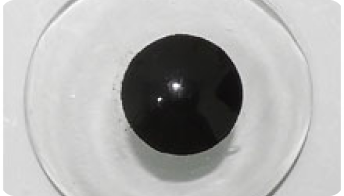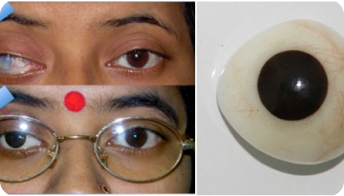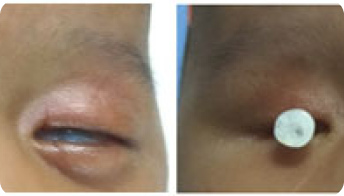What do we do?
The Ocular prosthetic Clinic at Sankara Nethralaya is a one of its kind facility equipped with State of the Art facilities and know-how needed in the preparationof different types of ocular prosthesis and their implantation
Ocular prosthesis is an artificial eye, which is implanted in patients who have lost their eye due to various causes such as trauma, surgery, cancer, or in patients with shrunken damaged eyes (phthisical eyes), congenital absence (anophthalmos) or abnormally small sized eyes (microphthalmos) with no visual potential. These conditions result in cosmetic disfigurement of the face which impactsthe patients psychologically andacts as a social stigma.
Cosmetic rehabilitation for these patients through the implantation of ocular prosthesis helps in restoring the patients’ confidence by improving their external appearance. The Ocular prostheses are fitted behind the eyelids over a shrunken eyeball or an orbital implant placed following surgical removal of the eye.

The various ocular prostheses available at the SN prosthetic clinic are:

Scleral shells
Made of thin transparent hard plastic material with central dark colored disc of paint resembling the cornea. This is implanted on patients with minimally shrunken eyeball with a total corneal opacity, which gets hidden under the central disc of dark paint.

Stock Shells
These are readymade shells made of acrylic and are available in standard sizes and shapes. These are fitted
a. In patients with moderately shrunken eyeballs.

b. In Newborn / children with anophthalmos (absence of eye) or microphthalmos (abnormally small eyes).
The stock shells do not provide accurate color match when compared with the other eye.

Custom made prosthesis
These are made of high quality acrylic material and are customized to fit thepatients’ eye socket (space which holds the prosthesis) accurately and hand painted to match the color of the other eye. This type of prosthesis gives optimum cosmesis with excellent symmetry and color match as they are fabricated as per the patient’s specifications.